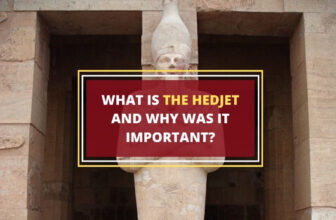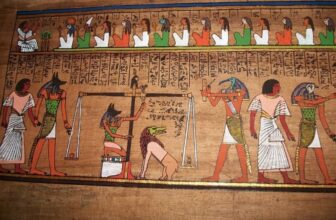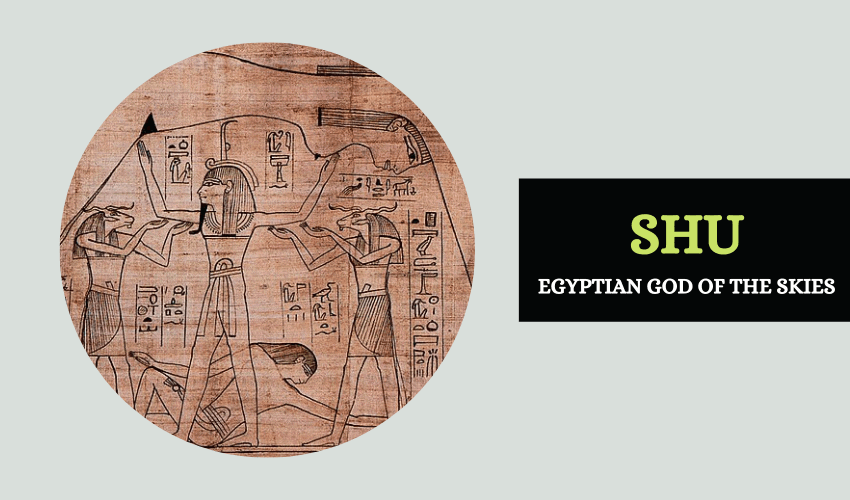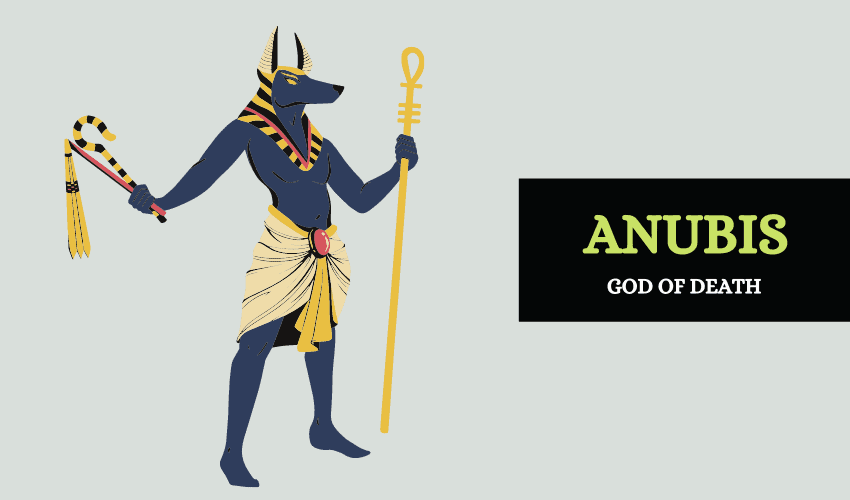
Table of Contents
In Egyptian mythology, Anubis was one of the oldest and most important deities. He preceded Osiris as funerary god and lord of the Underworld.
Known in Egyptian as Anpu or Inpu (a word which may have referred to the process of deterioration and decay), the deity was later renamed Anubis is by the Greeks. In both Egyptian and Greek cultures, Anubis was the protector and guardian of cemeteries, burial chambers and tombs. Anubis was predominantly associated with an unidentified canid, either a jackal, a fox, or a wolf.
Let’s take a closer look at Anubis and his several roles in Egyptian mythology.
Origins of Anubis

There are many different narratives surrounding the birth and origins of Anubis.
Earlier narratives state that he was the son of the cow goddess Hesat or the domestic goddess Bastet and solar god Ra. During the Middle Kingdom, when the Osiris myth became popular, Anubis was recast as the illegitimate son of Nephthys and Osiris.
Anubis’ female counterpart was Anput, the goddess of purification. His daughter Qebhet was a serpent deity who assisted him in the various tasks of the Underworld.
Below is a list of the editor’s top picks featuring the statue of Anubis.
Anubis as a Protector of Tombs and Graves
In ancient Egyptian burial traditions, the deceased were predominantly buried in shallow graves. Due to this practice, it was a common sight to see jackals and other scavengers digging for flesh. To protect the dead from the vicious hunger of these predators, images of Anubis were painted onto the tomb or grave stone. These images portrayed him as a dark-skinned man with a scary-looking canine head. Anubis’ name was also evoked in epithets, for greater defence, protection and security.
Anubis’ Role in the Underworld
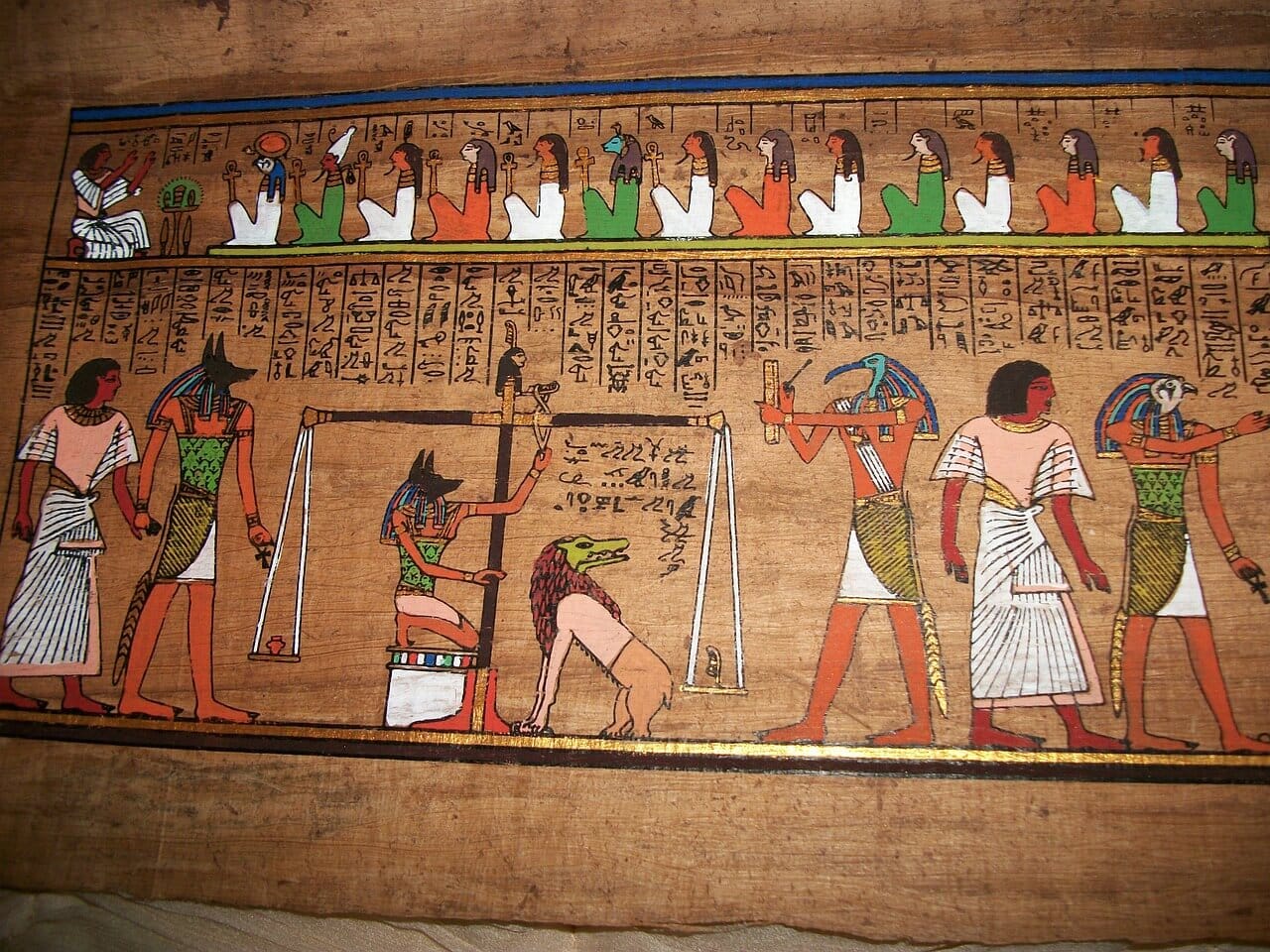
During the Old Kingdom, Anubis was the most important god of death and afterlife. However, by the time of the Middle kingdom, his roles and duties were relegated to a secondary position, as Osiris replaced him as the chief god of death.
Anubis became Osiris’ assistant, and his main duty was to guide men and women into the Underworld. Anubis also assisted Thoth in the Judgment of the Dead, a ceremony that took place in the Underworld, where a heart was weighed against Ma’at’s feather of truth to determine who were worthy enough to ascend into heaven.
Anubis and Mummification
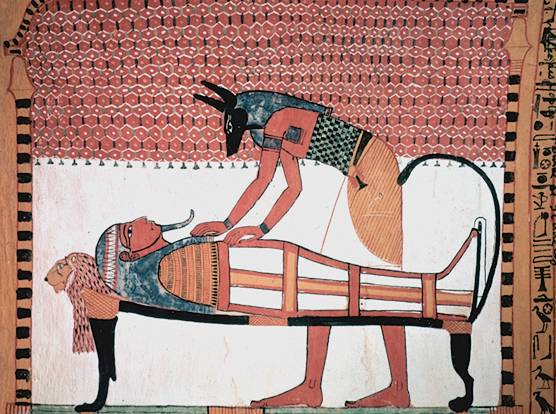
Anubis was often associated with the process of mummification and embalmment. In Egyptian culture and traditions, the ritual of mummification originated with Osiris, and he was the first king to die and undergo such process to protect and preserve his body. Anubis assisted Isis in the mummification and embalming the body of Osiris, and as a reward for his services, the god of death was gifted with the king’s organs.
Anubis and the Osiris Myth
Anubis was gradually incorporated into the Osiris myth, and played an important role in guarding and protecting the king in the afterlife. As the story goes, Anubis saw Set appear in the form of a leopard to cut and dismember Osiris’ body, but he thwarted the enemy’s attempts and wounded him with a hot iron rod. Anubis also flayed Set and obtained his leopard skin which he wore as a warning for those who attempted to disturb the dead.
Influenced by this myth, the priests of Anubis conducted their rituals while wearing leopard skin over their bodies. The manner in which Anubis wounded Set, also provided inspiration for an imaginative children’s tale that explained how the leopard got its spots.
Anubis’ Symbols
Anubis is often depicted with the following symbols and attributes, which are associated with his roles:
- Mummy Gauze – As god of embalming and mummification, the gauze that wraps the mummy is an important symbol of Anubis.
- Jackal – The association with jackals comes with the role of these animals as scavengers of the dead.
- Crook and Flail – The crook and flail are important symbols of royalty and kingship in ancient Egypt, and several deities are depicted holding either one of both of these symbols.
- Dark Hues –In Egyptian art and paintings, Anubis was predominantly represented in dark hues to symbolize the color of the corpse after embalmment. Black was also associated with the Nile river, and became an emblem of rebirth and regeneration, which Anubis, as a god of afterlife, helped people to achieve.
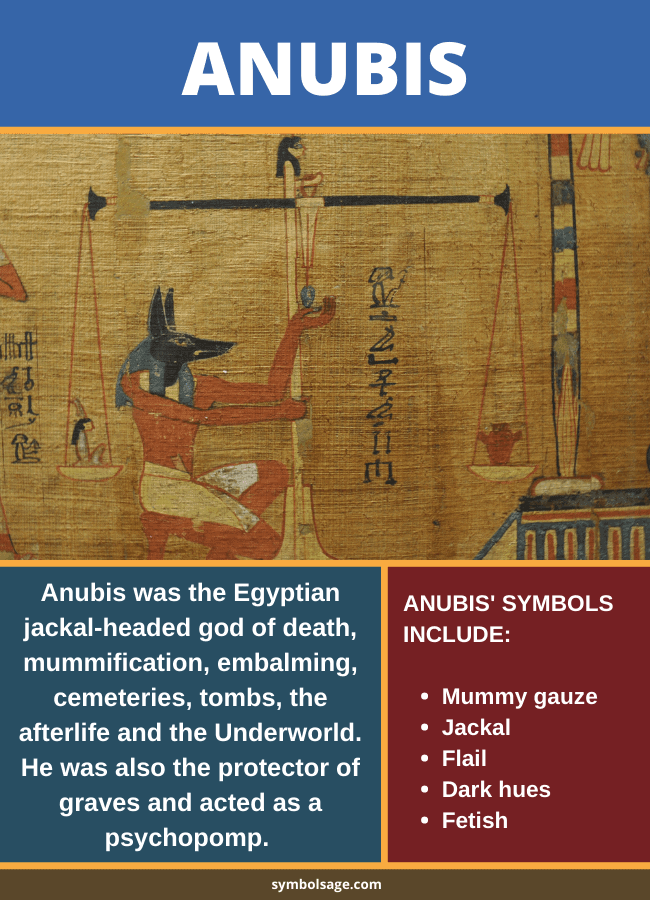
Symbolism of Anubis
- In Egyptian mythology, Anubis was a symbol of death and the Underworld. He had the role of guiding deceased souls into the Underworld and aiding in judging them.
- Anubis was a symbol of protection, and he safeguarded the deceased from vicious scavengers. He also restored Osiris’ body after he had been dismembered by Set.
- Anubis was closely associated with the process of mummification. He aided in the preservation of Osiris’ body.
Anubis in Greco- Roman Traditions
The myth of Anubis became associated with that of the Greek god Hermes, in late periods. The two deities were jointly called Hermanubis.
Both Anubis and Hermes were assigned the task of a psychopomp – a being who guides deceased souls to the Underworld. Although Greeks and Romans predominantly looked down upon Egyptian gods, Anubis had a special place in their culture and was given the status of an important deity.
Anubis was also often associated with Sirius, the brightest star in the heavens, and sometimes with Hades of the Underworld.
Representations of Anubis in Ancient Egypt
Anubis was a very popular figure in Egyptian art, and he was often depicted on burial tombs and caskets. He was usually portrayed doing tasks such as mummification or using the scale to carry out judgement.
In these pictures, Anubis is mostly represented as a man with a jackal’s head. There are also several images that showed him sitting on top of a tomb as a guardian of the dead. In The Book of the Dead, an Egyptian funerary text, the priests of Anubis are described as wearing a wolf mask and holding onto an upright mummy.
Representations of Anubis in Popular Culture
In books, movies, television series, games and songs, Anubis is usually represented as an antagonist and a cruel villain. For instance, in the television series Stargate SG-1, he is portrayed as the most harsh and ruthless of his species.
In the film, The Pyramid, Anubis is depicted as a horrific villain who commits many crimes and gets trapped in a pyramid. He also features in the book series Doctor Who: The Tenth Doctor, where he is seen as the antagonist and enemy of the Tenth Doctor.
A few artists and game developers have portrayed Anubis in a more positive light. In the game Kamigami no Asobi, Anubis is depicted as a shy and handsome man with jackal ears. Luna Sea, the Japanese rock band, has reimagined Anubis as a desirable and loveable man. The Pokémon character Lucario, based upon the myth of Anubis, is a strong and intelligent creature.
Anubis FAQs
Anubis is one of the oldest gods of the Egyptian pantheon. It’s possible that he developed from Wepwawet, an earlier god who is often confused with Anubis.
Black represented the decay of the human body after death, as well as the fertility of the Nile River. In this way, Anubis is linked both to death and life.
Initially, Anubis was depicted as the son of Ra and Hesat, but later he becomes the son of Osiris and Nephthys.
His daughter is Qebhet, or Kabechet, who brings water to dead souls in the underworld to offer them some comfort.
No. Unlike modern gods of the underworld, such as Satan, Anubis was a protector and comforter of the dead. He even stands with the dead as a judge and guide.
Anubis was one of the most popular gods. He doesn’t play a significant role in the myths but he was an important presence. He was later associated with gods from other mythologies, including the Greek god Hermes.
In Brief
Anubis was very popular with the Egyptians and Greeks alike. He provided the Egyptians with hope and certainty that they would be judged appropriately and righteously after death. Although Anubis is often misunderstood in popular culture, this trend is now changing, and he is gradually being represented in a positive light.







